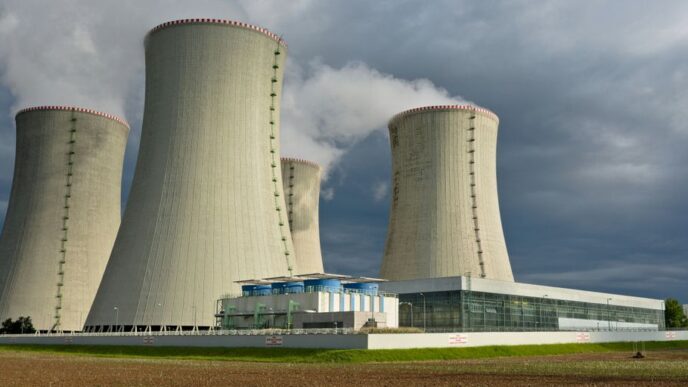Industrial sectors face growing pressure to adopt practices that reduce their environmental impact. Driven by stricter regulations, public awareness, and corporate sustainability goals, industries are seeking innovative ways to manage pollutants and minimize waste. One highly effective and environmentally friendly solution is the use of bulk activated carbon. This versatile material, known for its robust adsorptive properties, has become indispensable in industrial applications across water purification, air filtration, and soil remediation.
This blog explores the environmental benefits of bulk activated carbon in greater depth. We’ll look at how it enhances sustainability and supports cleaner, greener industrial practices.
What is Bulk Activated Carbon?
Activated carbon is a specialized form of carbon processed to achieve a vast network of pores, providing it with an impressively high surface area. This makes it exceptionally effective in trapping and adsorbing impurities, whether in water, air, or soil.
Activated carbon, produced from organic materials like wood, coconut shells, or coal, is available in bulk, making it a preferred solution for large-scale industrial applications. Its utility ranges from purifying drinking water to capturing harmful gases at chemical manufacturing plants.
1. Enhanced Water Purification
Effective Pollutant and Contaminant Removal
Industrial processes often generate wastewater laden with harmful contaminants. Textile factories discharge dyes and heavy metals into wastewater streams, while pharmaceutical industries release complex organic compounds. Bulk activated carbon acts as a filtration powerhouse, adsorbing these pollutants and ensuring that wastewater meets stringent regulatory standards before being released into the environment.
Activated carbon’s efficiency extends even further. It captures not only visible pollutants like colorants but also microscopic particles and dissolved chemicals invisible to the naked eye. For instance, it is effective at removing trihalomethanes (THMs), a harmful byproduct of chlorine disinfection, making treated water safer for aquatic life.
A Case in Point
Consider a food processing plant discharging wastewater rich in oils and organic matter. If untreated, this water risks polluting nearby rivers, harming both ecosystems and the local fishing industry. By integrating bulk activated carbon into their wastewater treatment system, the plant can significantly reduce organic pollutants while protecting surrounding waterways. The treated water can even be reused within the industrial facility itself, further conserving water resources.
2. Improved Air Quality
Captures Harmful Gases and Odors
Air pollution from industrial activities poses significant threats to human and environmental health. Factories and processing plants release various harmful emissions, such as volatile organic compounds (VOCs), sulfur compounds, and even toxic hydrocarbons. Here, bulk activated carbon plays a vital role in air purification. It effectively captures these pollutants through adsorption, ensuring cleaner air and reducing unpleasant industrial odors near manufacturing sites.
Mitigating VOCs in Critical Industries
An excellent example is the paint manufacturing industry, where VOC emissions are particularly high. Bulk activated carbon can be used in air filtration systems to trap VOCs before they’re released into the atmosphere. This not only helps the industry adhere to air quality regulations but also protects nearby communities from the health risks these emissions can cause, such as respiratory issues and headaches.
Reducing Industrial Contributions to Climate Hazards
Activated carbon curbs airborne pollution and indirectly mitigates broader environmental hazards like smog and acid rain. Smog further exacerbates global warming and harms crops and vegetation, while acid rain damages ecosystems and erodes infrastructure. Using bulk activated carbon for air filtration acts as a preventative measure, enhancing industrial sustainability.
3. Waste Reduction through Efficient Treatment
Minimizing Toxic Byproducts
Many industrial processes generate hazardous byproducts. For instance, refineries typically produce wastewater laced with petroleum hydrocarbons, while electronics manufacturers release effluents contaminated with heavy metals like cadmium and arsenic. Activated carbon facilitates the adsorption of toxic substances, helping industries treat waste before its disposal.
This process minimizes the environmental risks tied to untreated waste, including groundwater pollution and harmful chemical buildup in soil and water systems.
Sustainable Waste Management
Activated carbon proves invaluable in enabling industries to meet circular economy targets. For instance, treated wastewater from chemical plants can be reused in cooling systems or even irrigated safely in non-edible crop fields. This decreases the reliance on virgin resources while reducing the burden on landfill sites.
4. Soil Remediation for Contaminated Sites
Adsorbing Pollutants from Soil
Industrial facilities, mining operations, and accidental spills expose soils to heavy metals, oil residues, and other contaminants. These toxins threaten biodiversity and may seep into nearby water sources. Bulk activated carbon is often used in soil remediation projects, where its adsorptive properties help trap and neutralize these pollutants. This ensures that the contaminants are immobilized, preventing them from further polluting surrounding areas.
Land Recovery for Future Use
To illustrate, consider an old industrial site contaminated by years of chemical spillages. With proper activation carbon soil remediation techniques, the pollutants can be reduced to safer levels. Once remediated, the land could transition into a new park, agricultural site, or residential development. This breathes new life into previously unusable spaces, demonstrating how environmental restoration and urban progress can go hand in hand.
5. Aiding Sustainable Industrial Practices
Versatility Across Sectors
The applications of bulk activated carbon span a multitude of industries. For example, in the food and beverage sector, it helps decolorize and purify liquids like syrups and alcoholic beverages. Meanwhile, in the oil and gas industry, activated carbon treats wastewater contaminated by hydrocarbons and prevents flaring—an environmentally destructive process of burning excess gases.
By incorporating activated carbon into their everyday processes, industries can significantly optimize resource use, reduce emissions, and meet eco-conscious consumer expectations.
Promoting Corporate Environmental Responsibility
A hypothetical case might involve a power plant in an urban neighborhood. Communities often resist projects like these due to fears of air and water pollution. By using activated carbon systems for both air filtration and wastewater treatment, the plant not only eases community concerns but also demonstrates its commitment to green initiatives. This fosters goodwill while ensuring compliance with environmental standards—a win-win scenario for all stakeholders involved.
6. Supporting Long-Term Environmental Health
Contribution to Carbon Footprint Reduction
While activated carbon itself does not directly remove CO2 from the air, its use indirectly supports greenhouse gas mitigation. For example, by treating industrial emissions and improving waste reuse, activated carbon reduces the reliance on less sustainable practices. When applied widely, this small-scale efficiency becomes a large-scale solution to larger environmental challenges.
Aiding Renewable Energy Projects
Activated carbon also plays a key role in renewable energy initiatives, particularly in biofuel refinement and hydrogen fuel purification. By improving the sustainability of alternative energy resources it aligns with global goals of transitioning toward cleaner energy systems.
Bulk Activated Carbon as a Path to Sustainability
Bulk activated carbon is more than just a filtration material—it is a solution that empowers industries to address pressing environmental challenges. Its ability to purify water, improve air quality, remediate soil, and aid in waste management makes it a valuable ally in sustainable development.
Adopting bulk activated carbon reflects not only compliance with environmental laws but also a more profound commitment to global environmental health and corporate responsibility. From ensuring cleaner operations to enabling land restoration, this material has the potential to reshape industries for a greener tomorrow. For companies ready to make a meaningful impact, leveraging bulk activated carbon is a vital step toward sustainable and responsible industrial practices.














